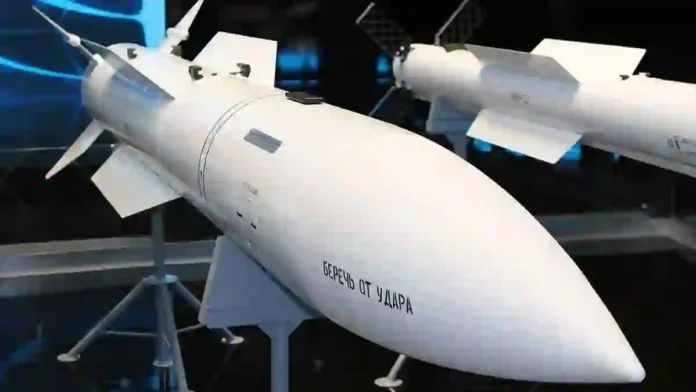India is significantly deepening its defence partnership with Russia, focusing on local production and integration of advanced Russian missile systems—most notably the R-37M long-range air-to-air missile and the S-400 air defence system—under the “Make in India” initiative. This strategic move is designed to rapidly bolster India’s air-power and deterrence capabilities in the face of rising threats from China and Pakistan, while also signalling India’s resolve to maintain strategic autonomy despite external pressures, including from the United States.
Key Developments And Strategic Rationale: R-37M Missile Local Production
At Aero India 2025, Russia formally proposed the sale and local production of the R-37M (exported as RVV-BD) in India. The R-37M is a hypersonic, long-range air-to-air missile with a range exceeding 300 km and speeds up to Mach 6, designed to neutralize high-value airborne targets such as AWACS, aerial refuellers, and enemy fighters before they can pose a threat.
The integration of the R-37M into India’s Su-30MKI fleet is already underway, with technical collaboration and technology transfer provisions enabling India not only to meet its own requirements but also to potentially export these missiles to friendly countries.
This capability leap directly addresses operational gaps exposed by Chinese PL-15 missiles and recent Pakistani use of long-range BVR (beyond-visual-range) missiles, shifting India’s air combat posture from primarily defensive to deep stand-off engagement.
Su-30MKI Upgrades
Hindustan Aeronautics Limited (HAL) is leading a comprehensive upgrade program for the Su-30MKI, India’s air dominance workhorse, incorporating both Indian and Russian technologies. Upgrades include:
Integration of indigenous Astra BVR missiles, Rudram anti-radiation missiles, and BrahMos air-launched cruise missiles.
Enhanced radar and electronic warfare systems, including possible adoption of the Virupaksha radar in future blocks.
These upgrades will make the Su-30MKI a formidable 4.5-generation platform, capable of challenging even next-generation adversaries and providing a cost-effective alternative to Western fighters.
Read- 88 Hours of Conflict Reveal Scale of Damage Inflicted by Indian Military During Operation Sindoor
Read- Why India Should Acquire Russia’s Advanced S-500 Air Defence System
Air Defence Network: S-400 And S-500
India has already inducted the S-400 Triumf air defence system, with deployments covering strategic regions along the borders with China and Pakistan. The S-400 offers detection ranges up to 600 km and engagement ranges up to 400 km, with advanced radar and electronic warfare resistance capabilities.
India is now in advanced talks with Russia for the procurement of the next-generation S-500 system, which would further extend India’s multi-layered air defence shield and enhance its ability to counter emerging aerial threats.
The S-400 has been integrated with indigenous Akash and Israeli Barak-8 systems, creating a robust, multi-tiered air defence network.
Strategic And Industrial Implications: Technological Self-Reliance
The shift from a supplier-consumer relationship to a co-development and co-production framework with Russia is accelerating India’s domestic defence industrial base. Local assembly and technology transfer for systems like the R-37M are expected to inject significant investment into India’s missile sector and create new opportunities for local suppliers and SMEs.
Regional Power Projection
By acquiring and indigenously producing advanced Russian missile systems, India is sending a clear message to both China and Pakistan that it is prepared to counter their technological advances and assert its air superiority in the region. This move also enhances India’s ability to act as a regional supplier of advanced weaponry.
Strategic Autonomy
India’s approach remains multi-aligned, leveraging partnerships with Russia, the US, France, and Israel to source the best available technologies while maintaining independence in defence procurement decisions.
Conclusion
India’s pursuit of local production and integration of Russian systems like the R-37M and S-400, alongside upgrades to the Su-30MKI fleet and potential acquisition of the S-500, marks a decisive step in its quest for air dominance. This strategy not only strengthens India’s deterrence posture against China and Pakistan but also advances its goal of defence self-reliance and positions it as a key player in the regional and global defence landscape.
IDN (With Agency Inputs)
Agencies




